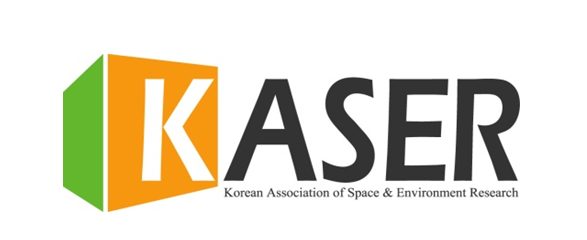ISSN : 1225-6706
논문 상세
- 2024 (34권)
- 2023 (33권)
- 2022 (32권)
- 2021 (31권)
- 2020 (30권)
- 2019 (29권)
- 2018 (28권)
- 2017 (27권)
- 2016 (26권)
- 2015 (25권)
- 2014 (24권)
- 2013 (23권)
- 2012 (22권)
- 2011 (21권)
- 2010 (33호)
- 2009 (31호)
- 2008 (29호)
- 2007 (27호)
- 2006 (26호)
- 2005 (23호)
- 2004 (21호)
- 2003 (19호)
- 2002 (17호)
- 2001 (15호)
- 2000 (13권)
- 1999 (11권)
- 1998 (10권)
- 1997 (8권)
- 1996 (7권)
- 1995 (5권)
- 1994 (4권)
- 1993 (3권)
- 1992 (2권)
- 1991 (1권)
여성친화도시는 여성(들)을 위한 도시(화)인가 : 여성주의적 도시권 관점을 중심으로1
Research on the difference between women-friendly cities and urbanization for women: focusing on the right to urbanization for women
초록
본 연구는 여성친화도시 사업을 분석하여, 여성친화도시가 어떤 가치를 지향하고 있는지, 여성친화도시가 ‘여성(들)을 위한 도시(화)’가 되기 위해서는 어떤 정책 방향성이 필요한지를 분석한다. 분석을 위한 이론적 도구로 ‘도시에 대한 권리’ 개념을 여성학적으로 재정립한다. ‘여성(들)의 도시(화)에 대한 권리’는 젠더화된 도시화에서 유도된 ‘최소한의 차이’를 정치화함으로써 ‘최대한의 차이’로 만들 권리이며, 젠더화된 도시화의 맥락을 변화시키고 새로운 도시화의 결절점을 만들 권리이다. 그러나 여성친화도시 사업은 이론적 배경에서부터 젠더 이분법을 그대로 적용하여, ‘돌봄’이나 ‘안전’ 등 남성중심적 도시화에서 유도된 ‘최소한의 차이’를 기반으로 사업의 틀거리가 구성되어 있었다. 실제 기초지자체의 여성친화도시 운영 역시 여성친화도시 사업의 전반적 한계를 그대로 반영하여, 사업 전반적으로 도시 내 젠더 이분법적 구분을 그대로 수용하고 있었으며, 여성들이 그러한 구조를 수용하고 체화하기에 ‘친화적(friendly)’인 환경을 조성하는 데 초점이 맞춰져 있었다. 이러한 여성친화도시 사업은 성차별적 구조를 재생산하기 위해 여성 정체성을 단일화하고 추상화하는 남성중심적 도시화 전략과 유사하다. 여성친화도시 사업이 기존의 정책적 한계를극복하고 ‘여성(들)을 위한 도시(화)’를 위한 정책으로 나아가기 위해서는 사업 자체의 이론적 근간을 ‘여성(들)을 위한 도시(화)’로 변경하여, 남성중심적 도시화에서 유도되는 ‘최소한의 차이’를 정치화하고, 도시(적인 것)의 맥락 변화를 통해 ‘최대한의 차이’를 만드는 것을 사업의 새로운 목적으로 설정할 필요가 있다.
- keywords
- woman-friendly city, the right to city, minimal difference, maximum difference, affinity, 여성친화도시, 도시에 대한 권리, 최소한의 차이, 최대한의 차이, 친화성
Abstract
This study analyzes the policy structure and operational status of women-friendly cities. It also analyzes the policy directions needed to transform women-friendly cities into ‘urbanization for women’. As a theoretical tool for analysis, it redefines the concept of ‘right to the city’ in a feminist way. Women’s right to the urbanization is a right to politicize the ‘minimal difference’ caused by gendered urbanization to create a ‘maximum difference’, and a right to change the context of gendered urbanization and create a new urbanization. The contents of women-friendly city projects are subject to the ‘minimal differences’ caused by masculinized urbanization, such as ‘care’ and ‘safety’. The operation of basic local governments also reflects the limitations of the Women Friendly City project. This is similar to masculinized urbanization strategies that reconfigure and abstract women's identities to reproduce sexist structures. In order for women-friendly city projects to overcome their existing political limitations and move towards ‘urbanization for women’, it is necessary to shift the theoretical foundation of the project itself to 'urbanization for women'. It is also necessary to politicize the “minimal difference” caused by masculinized urbanization and set a new goal of the project to create a “maximum difference” by changing the urban context.
- keywords
- woman-friendly city, the right to city, minimal difference, maximum difference, affinity, 여성친화도시, 도시에 대한 권리, 최소한의 차이, 최대한의 차이, 친화성
- 다운로드 수
- 조회수
- 0KCI 피인용수
- 0WOS 피인용수
